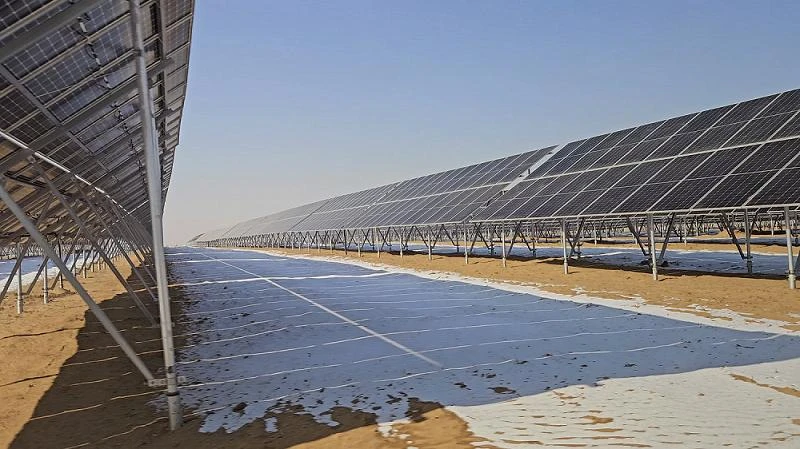Exploring the Benefits and Applications of Bifacial Solar Panels in Renewable Energy
The Rise of Solar Bifacial Panels A Sustainable Energy Solution
As the world grapples with climate change and the quest for sustainable energy sources intensifies, solar power has emerged as a leading contender. Among the various innovations in solar technology, bifacial solar panels are gaining significant attention due to their enhanced efficiency and versatility. This article explores what bifacial panels are, their advantages over traditional solar panels, and their potential role in the renewable energy landscape.
What Are Bifacial Solar Panels?
Bifacial solar panels are a type of photovoltaic (PV) module that can capture sunlight on both the front and back sides. Unlike traditional solar panels, which only harness solar energy from one side, bifacial panels utilize advanced technology that allows them to absorb direct sunlight as well as reflected sunlight from the ground, buildings, or other surfaces surrounding them. This dual-sided functionality makes them particularly efficient and capable of generating more electricity throughout the day.
How Do Bifacial Panels Work?
The efficiency of bifacial panels can be attributed to their design and the materials used. Typically, these panels are made with transparent back sheets or glass, allowing light to pass through and be absorbed by solar cells on the reverse side. The amount of additional energy generated depends on several factors, including the type of installation, the albedo (reflectivity) of the surface below, and the geographical location.
For example, installing bifacial panels over reflective surfaces, such as white gravel or light-colored concrete, can significantly increase their output. Studies have shown that bifacial panels can produce between 10% to 20% more energy compared to their monofacial counterparts under optimal conditions. This boost in efficiency makes them a compelling choice for large-scale solar installations, particularly in open fields.
Advantages of Bifacial Solar Panels
1. Increased Energy Output As mentioned, bifacial panels can generate more electricity due to their ability to capture reflected sunlight, leading to a higher return on investment for solar projects.
solar bifacial panels

2. Durability and Longevity Bifacial panels are often constructed with more robust materials, such as double glass. This enhances their durability, offering a longer lifespan compared to conventional panels, which can degrade over time.
3. Reduced Land Use With the greater energy production capacity of bifacial panels, fewer installations are needed to meet energy needs. This reduces the land footprint of solar farms, allowing for land preservation or dual land use, such as agriculture and solar energy generation.
4. Versatility in Installation Bifacial panels can be installed in various configurations, including fixed tilt, tracker systems, and even vertical installations. This flexibility makes them suitable for diverse environments and project types.
5. Cost-Effectiveness While the initial investment for bifacial panels may be slightly higher than traditional panels, the long-term energy generation and increased efficiency often offset these costs, making them a financially attractive option in the long run.
Challenges and Considerations
Despite their numerous advantages, bifacial solar panels are not without challenges. The effectiveness of their dual-sided energy capture can be highly dependent on environmental factors. For instance, snow-covered or wet surfaces can significantly enhance energy generation, while certain dirt or debris can hinder performance on the backside. Additionally, the initial costs of bifacial panels remain a consideration for some buyers.
Conclusion
As the renewable energy market evolves, solar bifacial panels stand out as a promising solution for increasing efficiency and reducing the overall environmental impact of solar technology. With the potential for higher energy output, durability, and reduced land use requirements, bifacial panels are not only a boon to the solar industry but also a significant step towards a sustainable energy future. As technology continues to advance and costs decline, bifacial solar panels may play a crucial role in meeting global energy demands while addressing the pressing challenges of climate change. The future of solar energy is bright, and bifacial panels are ready to shine.
-
Unlocking Energy Freedom with the Off Grid Solar InverterNewsJun.06,2025
-
Unlock More Solar Power with a High-Efficiency Bifacial Solar PanelNewsJun.06,2025
-
Power Your Future with High-Efficiency Monocrystalline Solar PanelsNewsJun.06,2025
-
Next-Gen Solar Power Starts with Micro Solar InvertersNewsJun.06,2025
-
Harnessing Peak Efficiency with the On Grid Solar InverterNewsJun.06,2025
-
Discover Unmatched Efficiency with the Latest String Solar InverterNewsJun.06,2025







